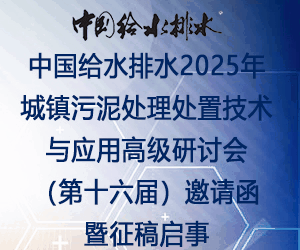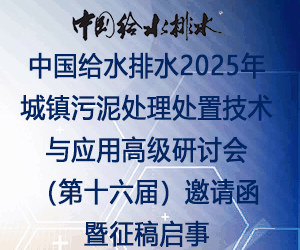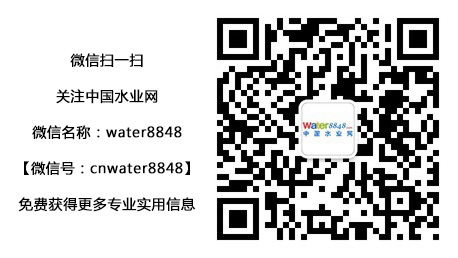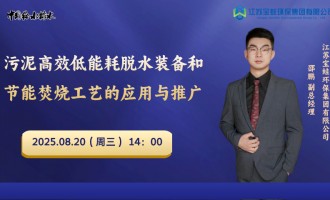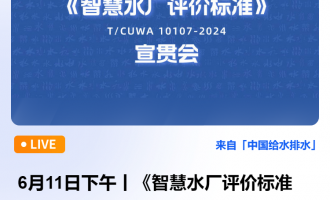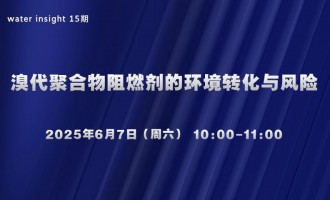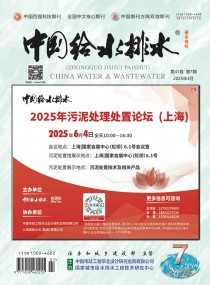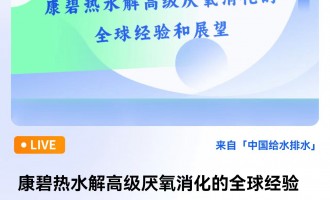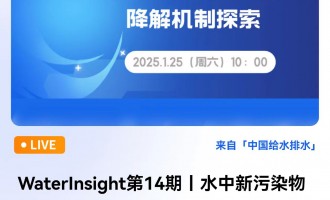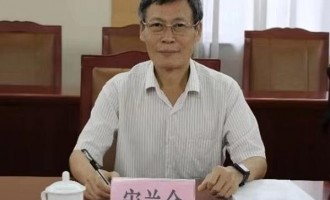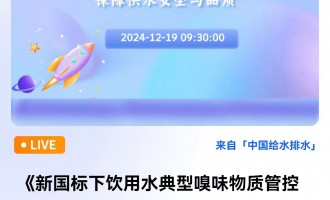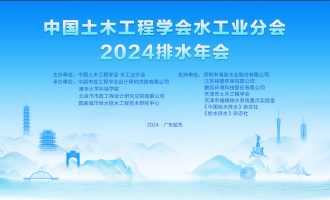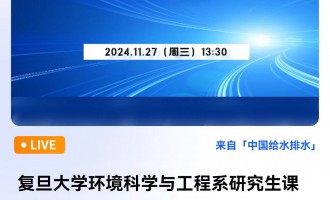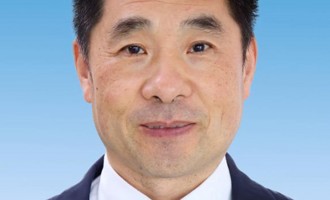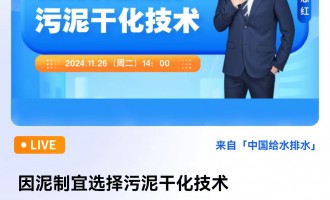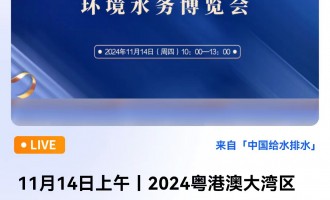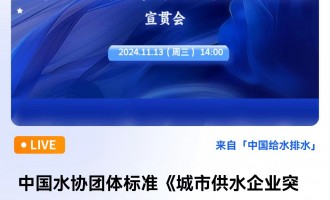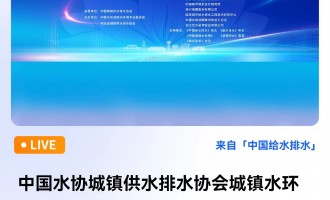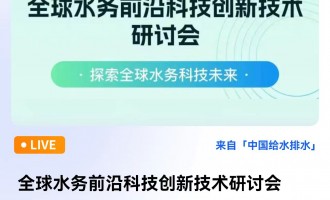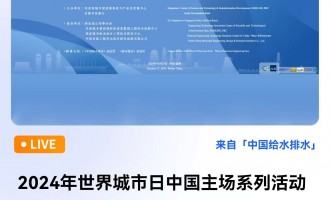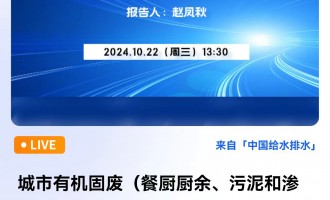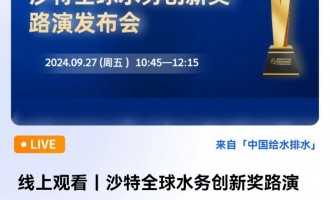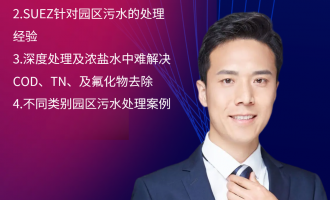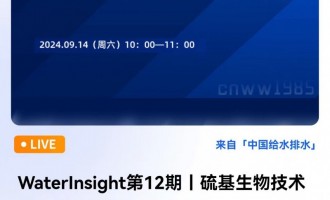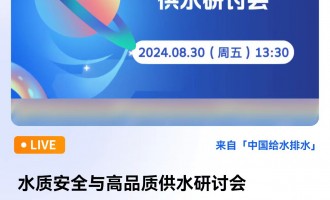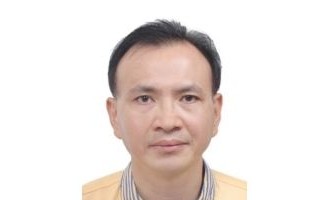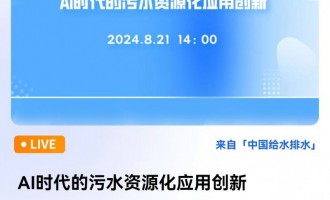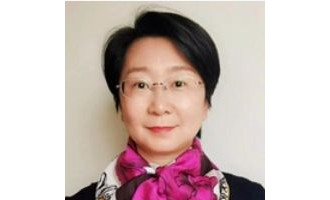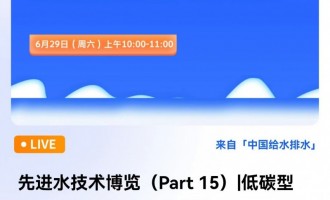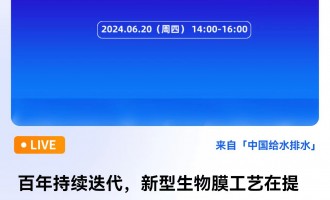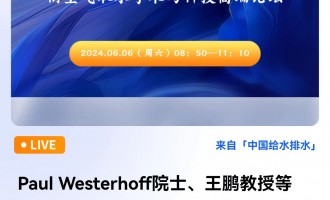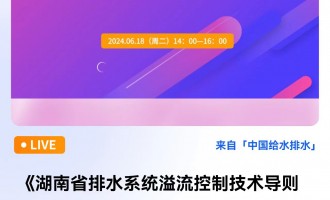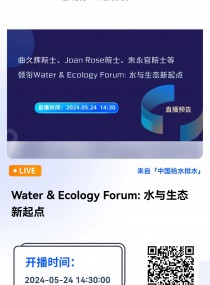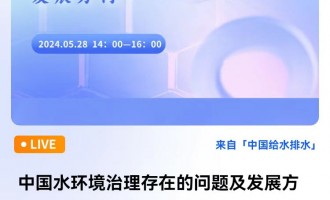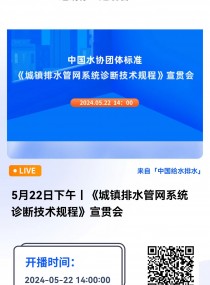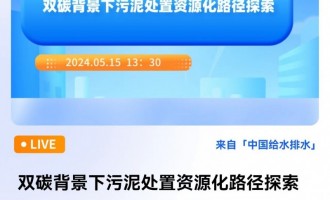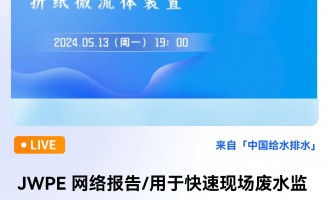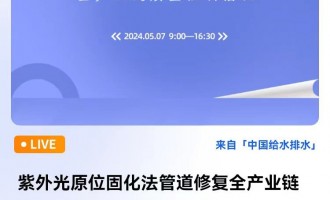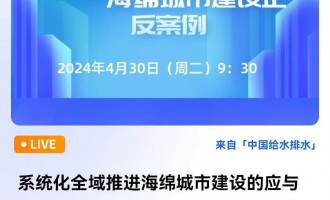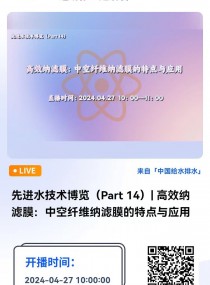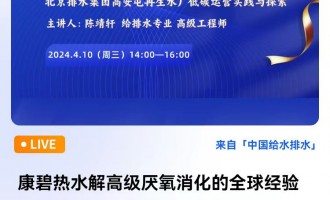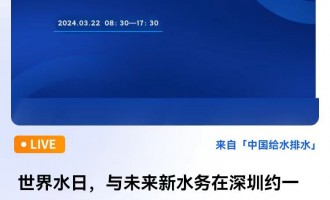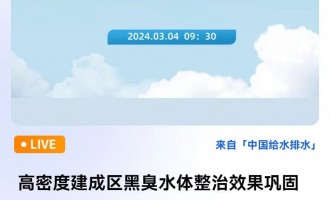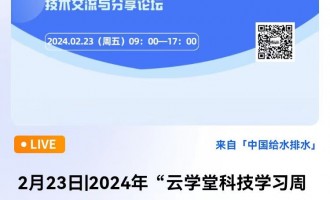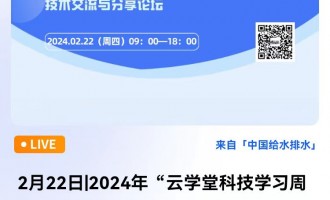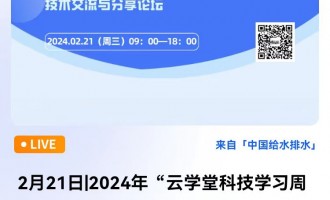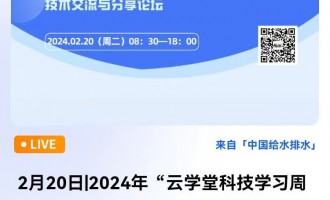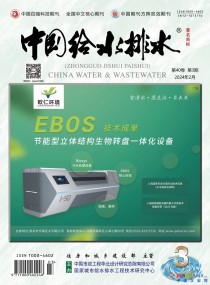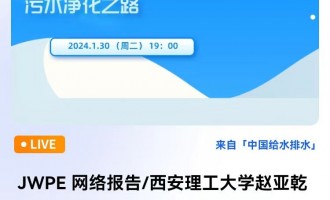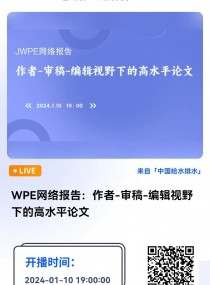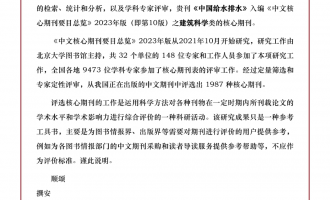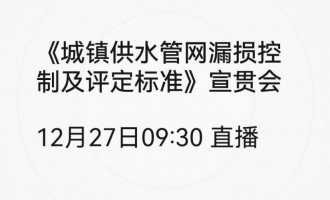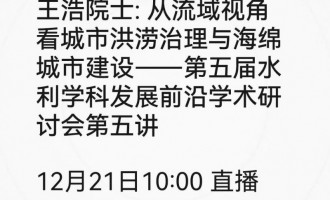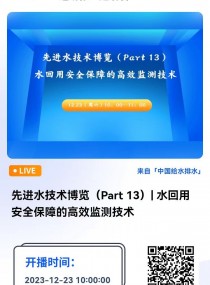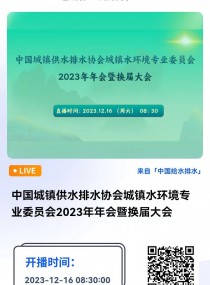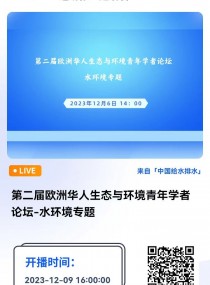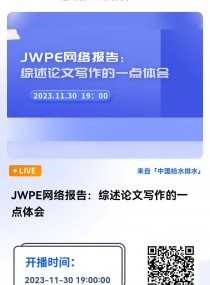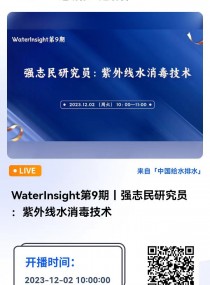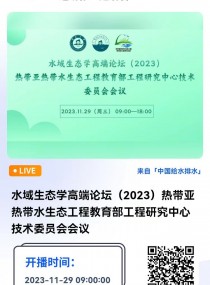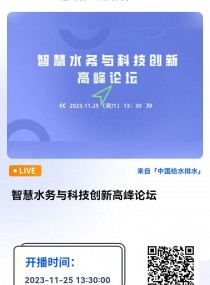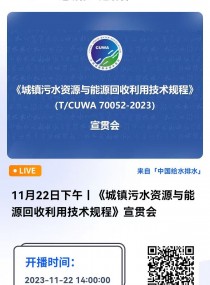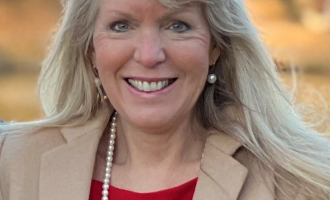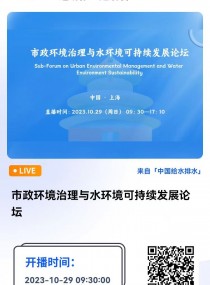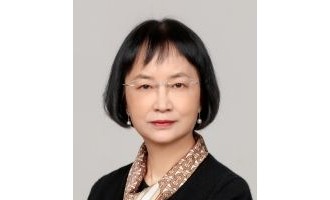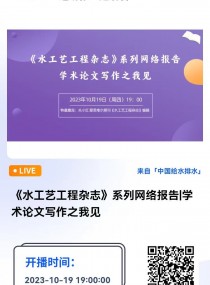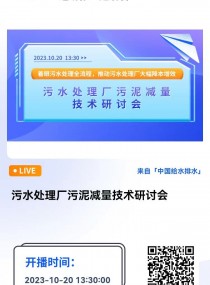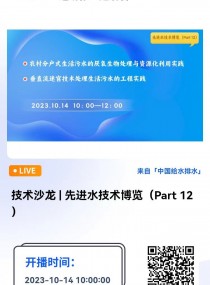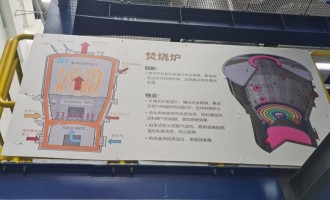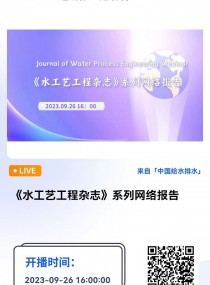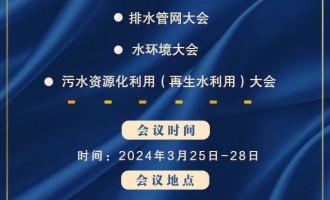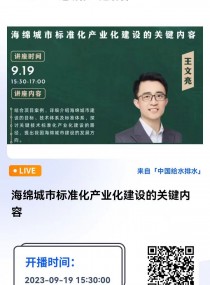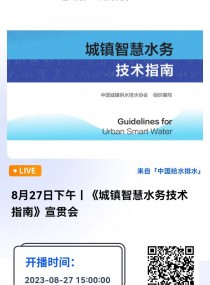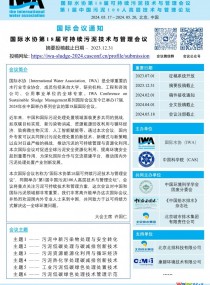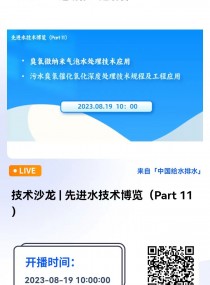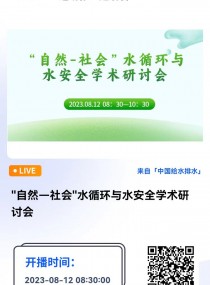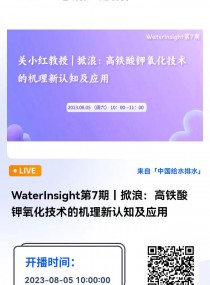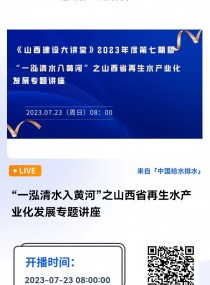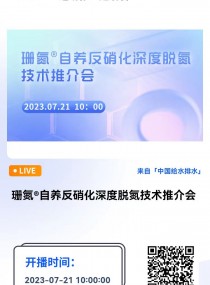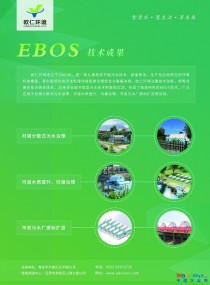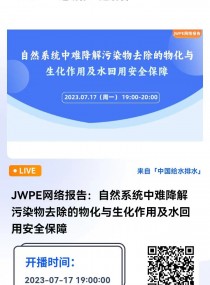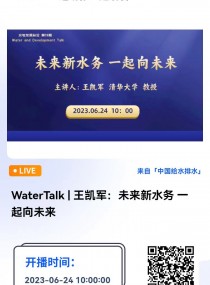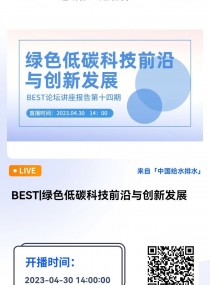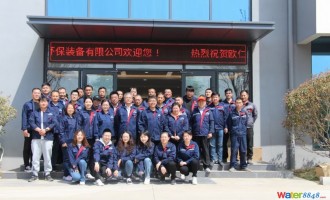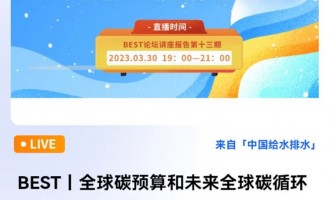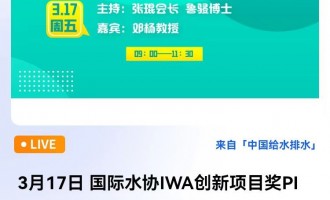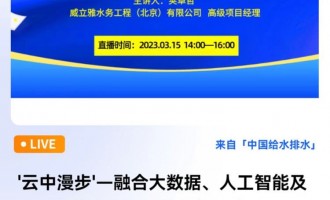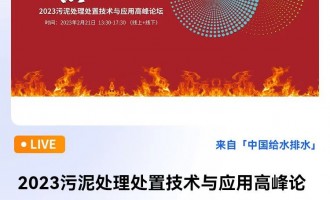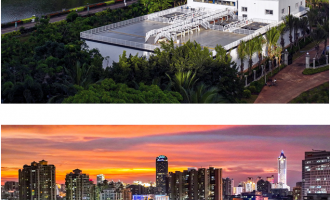COUNCIL DIRECTIVE
of 21 May 1991
concerning urban waste water treatment
城市污水处理指令
(91/271/EEC)
来源:欧盟议会
Article 1 第一条
This Directive concerns the collection, treatment and discharge of urban waste water and the treatment and discharge of waste water from certain industrial sectors.
本指令涉及城市污水的收集、处理和排放,以及某些工业部门废水的处理和排放。
The objective of the Directive is to protect the environment from the adverse effects of the abovementioned waste water discharges.
该指令的目的是保护环境免受上述污废水排放的不利影响。
Article 2 第二条
For the purpose of this Directive:
本指令涉及的名词定义:
1. "urban waste water" means domestic waste water or the mixture of domestic waste water with industrial waste water and/or run-off rain water;
1.“城市污水”是指生活污水,或生活污水、工业废水、径流雨水的混合污废水;
2. "domestic waste water" means waste water from residential settlements and services which originates predominantly from the human metabolism and from household activities;
2.“生活污水”是指主要来源于人类新陈代谢,以及服务于人类家庭居住和活动而产生的污水;
3. "industrial waste water" means any waste water which is discharged from premises used for carrying on any trade or industry, other than domestic waste water and run-off rain water;
3.“工业废水”是指从用于从事任何工商业生产的场所排放的废水,其中所排放的生活废水和径流雨水除外;
4. "agglomeration" means an area where the population and/or economic activities are sufficiently concentrated for urban waste water to be collected and conducted to an urban waste water treatment plant or to a final discharge point;
4.“集聚区”是指人口和/或经济活动充分集中,城市污水可被收集并输送至城市污水处理厂或最终排放点的区域;
5. "collecting system" means a system of conduits which collects and conducts urban waste water;
5.“收集系统”是指收集并输送城市污水的管道系统;
6. "population equivalent" means the organic biodegradable load having a five-day biochemical oxygen demand (BOD5) of 60 g of oxygen per day;
6.“人口当量”是指按每人每天排放60克氧气当量的有机物计算,所排放的五天生化需氧量(BOD5)有机生物降解负荷;
7. "primary treatment" means treatment of urban waste water by a physical and/or chemical process involving settlement of suspended solids, or other processes in which the BOD5 of the incoming waste water is reduced by at least 20 % before discharge and the total suspended solids of the incoming waste water are reduced by at least 50 %;
7. “一级处理”是指通过物理和/或化学工艺处理城市污水,包括沉降悬浮物,或可将进水的BOD5在排放前至少降低20%,进水总悬浮固体至少减少50%的其他工艺;
8. "secondary treatment" means treatment of urban waste water by a process generally involving biological treatment with a secondary settlement or other process in which the requirements established in Table 1 of Annex I are respected;
8. “二级处理”是指处理城市污水的包括具有二次沉淀的生物处理工艺,或其他符合附件I中表1要求的工艺;
9. "appropriate treatment" means treatment of urban waste water by any process and/or disposal system which after discharge allows the receiving waters to meet the relevant quality objectives and the relevant provisions of this and other Community Directives;
9. “妥当处理”是指通过任何的工艺和/或处置系统对城市污水进行处理,排放后使接收水达到相关质量目标以及本指令和其他欧盟共同体指令的相关规定;
10. "Sludge" means residual sludge, whether treated or untreated, from urban waste water treatment plants;
10.“污泥”是指城市污水处理厂产生的经处理或未经处理的剩余污泥;
11. "eutrophication" means the enrichment of water by nutrients, especially compounds of nitrogen and/or phosphorus, causing an accelerated growth of algae and higher forms of plant life to produce an undesirable disturbance to the balance of organisms present in the water and to the quality of the water concerned;
11. “富营养化”是指水体中营养成分富集,尤其是氮和/或磷的化合物,导致藻类和高等植物的加速生长,从而对水中生物的平衡以及水质产生负面影响;
12. "estuary" means the transitional area at the mouth of a river between fresh-water and coastal waters. Member States shall establish the outer (seaward) limits of estuaries for the purposes of this Directive as part of the programme for implementation in accordance with the provisions of Article 17 (1) and (2);
12.“河口”是指淡水和沿海水域之间的河口过渡区。 欧盟成员国应根据第 17 条第(1)和(2)款的规定,建立河口外部(向海一侧)的界限,作为实施本指令工作的一部分;
13. "coastal waters" means the waters outside the low-water line or the outer limit of an estuary.
13.“沿海水域”是指低于水位线以外的水域或河口界限外围的水域。
Article 3 第三条
1. Member States shall ensure that all agglomerations are provided with collecting systems for urban waste water,
1. 欧盟成员国应确保为所有人口聚集地提供城市污水收集系统,
- at the latest by 31 December 2000 for those with a population equivalent (p.e.) of more than 15000, and
- 对于人口当量超过15000的区域,最迟在2000年12月31日之前完成,以及
- at the latest by 31 December 2005 for those with a p.e. of between 2000 and 15000.
- 对于人口当量介于2000到15000人之间的区域,最迟在2005年12月31日之前。
For urban waste water discharging into receiving waters which are considered "sensitive areas" as defined under Article 5, Member States shall ensure that collection systems are provided at the latest by 31 December 1998 for agglomerations of more than 10000 p.e.
对于需要排放入第5条所定义的被视为“敏感区域”的受纳水域的城市污水,成员国应确保最迟在1998年12月31日之前为超过10000人口当量的集聚区提供污水收集系统。
Where the establishment of a collecting system is not justified either because it would produce no environmental benefit or because it would involve excessive cost, individual systems or other appropriate systems which achieve the same level of environmental protection shall be used.
对于建设收集系统并不合理的,不论是不能产生环境效益或成本过高等原因,都应当采用单独的系统或其他达到同等环境保护水平的合适的系统。
2. Collecting systems described in paragraph 1 shall satisfy the requirements of Annex I (A). These requirements may be amended in accordance with the procedure laid down in Article 18.
2. 第 1 段所述的收集系统应满足附录I(A)的要求。这些要求可以根据第 18 条规定的程序进行修改。
Article 4 第四条
1. Member States shall ensure that urban waste water entering collecting systems shall before discharge be subject to secondary treatment or an equivalent treatment as follows:
1. 成员国应确保以下区域纳入收集系统的城市污水在排放前应经过二级处理或等效处理:
- at the latest by 31 December 2000 for all discharges from agglomerations of more than 15000 p.e.,
- 最迟在2000年12月31日之前确保从超过15000人口当量的聚集地排放的污水经过二级处理,
- at the latest by 31 December 2005 for all discharges from agglomerations ofbetween 10000 and 15000 p.e.,
- 最迟在2005年12月31日之前确保从10000到15000人口当量范围的聚集地排放的污水经过二级处理,
- at the latest by 31 December 2005 for discharges to fresh-water and estuaries from agglomerations of between 2000 and 10000 p.e.
- 最迟在2005年12月31日之前确保从2000到10000人口当量范围的聚集地排放的污水经过二级处理,
2. Urban waste water discharges to waters situated in high mountain regions (over 1500 m above sea level) where it is difficult to apply an effective biological treatment due to low temperatures may be subjected to treatment less stringent than that prescribed in paragraph 1, provided that detailed studies indicate that such discharges do not adversely affect the environment.
2. 城市污水排放至位于高山地区(海拔1500米以上)的水域,因低温而难以进行有效的生物处理,可采用低于第1款规定的处理严格程度,但前提是经过详细研究表明,此类排放不会对环境产生不利影响。
3. Discharges from urban waste water treatment plants described in paragraphs 1 and 2 shall satisfy the relevant requirements of Annex I.B. These requirements may be amended in accordance with the procedure laid down in Article 18.
3. 第1款和第2款所述的城市污水处理厂的排放,应符合附录I.B 的相关要求。这些要求可以根据第18条规定的程序进行修改。
4. The load expressed in p.e. shall be calculated on the basis of the maximum average weekly load entering the treatment plant during the year, excluding unusual situations such as those due to heavy rain.
4. 以人口当量表示的污染负荷,应以年内进入处理厂的每周最大平均负荷计算,不包括暴雨等异常情况。
Article 5 第五条
1. For the purposes of paragraph 2, Member States shall by 31 December 1993 identify sensitive areas according to the criteria laid down in Annex II.
1. 为了达到第2款的要求,成员国应在1993年12月31日之前根据附件II中规定的标准确定敏感区域。
2. Member States shall ensure that urban waste water entering collecting systems shall before discharge into sensitive areas be subject to more stringent treatment than that described in Article 4, by 31 December 1998 at the latest for all discharges from agglomerations of more than 10000p.e.
2. 成员国应确保进入收集系统的城市污水在被排放到敏感区域之前,最迟在1998年12月31日之前,对所有超过10000当量人口的聚集区域的排放水进行比第4条所述更为严格的处理。
3. Discharges from urban waste water treatment plants described in paragraph 2 shall satisfy the relevant requirements of Annex I B. These requirements may be amended in accordance with the procedure laid down in Article 18.
3.第2款所述的城市污水处理厂的排放水,应符合附件I B的相关要求。这些要求可以按照第18条规定的程序进行修改。
4. Alternatively, requirements for individual plants set out in paragraphs 2 and 3 above need not apply in sensitive areas where it can be shown that the minimum percentage of reduction of the overall load entering all urban waste water treatment plants in that area is at least 75 % for total phosphorus and at least 75 % for total nitrogen.
4. 或者,上述第2段和第3段中对于敏感区域的单个污水厂的要求可以不必参考,但需要表明进入这些城市污水处理厂的污染物总负荷的削减量至少达到 总磷的75%,以及总氮的75%。
5. Discharges from urban waste water treatment plants which are situated in the relevant catchment areas of sensitive areas and which contribute to the pollution of these areas shall be subject to paragraphs 2, 3 and 4.
5. 位于敏感地区相关集水区的城市污水处理厂的排放,对这些地区造成污染的,适用第2、3、4款的规定。
In cases where the above catchment areas are situated wholly or partly in another Member State Article 9 shall apply.
如果上述集水区全部或部分位于另一个成员国,则应适用第9条。
6. Member States shall ensure that the identification of sensitive areas is reviewed at intervals of no more than four years.
6. 成员国应确保不超过每四年一次对敏感区域的识别进行审查。
7. Member States shall ensure that areas identified as sensitive following review under paragraph 6 shall within seven years meet the above requirements.
7. 成员国应确保根据第6款审查确定为敏感区域的区域,应在七年内都满足上述的要求。
8. A Member State does not have to identify sensitive areas for the purpose of this Directive if it implements the treatment established under paragraphs 2, 3 and 4 over all its territory.
8. 如果成员国在其所有领土上实施第2、3和4段规定的要求,则成员国不必为了满足本指令的要求确定敏感区域。
Article 6 第六条
1. For the purposes of paragraph 2, Member States may by 31 December 1993 identify less sensitive areas according to the criteria laid down in Annex II.
1. 为了满足第2款的要求,成员国可在1993年12月31日之前根据附件II中规定的标准确定不太敏感的区域。
2. Urban waste water discharges from agglomerations of between 10000 and 150000 p.e. to coastal waters and those from agglomaterions of between 2000 and 10000 p.e. to estuaries situated in areas described in paragraph 1 may be subjected to treatment less stringent than that prescribed in Article 4 providing that:
2. 当量人口为10000到150000,城市污水排放到沿海水域的集聚区,和当量人口2000到10000之间,城市污水排放到第1款所述的河口水域的聚集区,可进行低于第4条规定的处理,前提是:
- such discharges receive at least primary treatment as defined in Article 2 (7) in conformity with the control procedures laid down in Annex I D,
- 此类排放至少按照第2条第(7)款要求中规定的一级工艺进行处理,并按附件I D要求执行控制管理程序,
- comprehensive studies indicate that such discharges will not adversely affect the environment.
- 综合研究表明,此类排放不会对环境产生不利影响。
Member States shall provide the Commission with all relevant information concerning the abovementioned studies.
成员国应向欧盟委员会提供有关上述研究的所有相关信息。
3. If the Commission considers that the conditions set out in paragraph 2 are not met, it shall submit to the Council an appropriate proposal.
3. 如果委员会认为第2条规定的条件不能满足,应向欧盟理事会提交适当的提案。
4. Member States shall ensure that the identification of less sensitive areas is reviewed at intervals of not more than four years.
4. 成员国应确保不超过每四年一次对次敏感区域的识别进行审查。
5. Member States shall ensure that areas no longer identified as less sensitive shall within seven years meet the requirements of Articles 4 and 5 as appropriate.
5. 成员国应确保不再被确定为次敏感的区域应在七年内酌情力争满足第4条和第5条的要求。
Article 7 第七条
Member States shall ensure that, by 31 December 2005, urban waste water entering collecting systems shall before discharge be subject to appropriate treatment as defined in Article 2 (9) in the following cases:
成员国应确保在2005年12月31日之前,城市污水在排放进入收集系统前,应在下列情况下按照第2条第9款的规定进行适当的处理:
- for discharges to fresh-water and estuaries from agglomerations of less than 2000 p.e.,
- 适用于排放到淡水和河口,从小于2000人口当量的聚集区排放的污水,
- for discharges to coastal waters from agglomerations of less than 10000 p.e.
- 适用于排放到沿海水域,从小于10000人口当量的聚集区排放的污水。
Article 8 第八条
1. Member States may, in exceptional cases due to technical problems and for geographically defined population groups, submit a special request to the Commission for a longer period for complying with Article 4.
1. 在特殊情况下,由于技术问题和地理原因确定的人口规模群体,成员国可以向委员会提交更长期限的特别请求,以满足第4条的要求。
2. This request, for which grounds must be duly put forward, shall set out the technical difficulties experienced and must propose an action programme with an appropriate timetable to be undertaken to implement the objective of this Directive. This timetable shall be included in the programme for implementation referred to in Article 17.
2. 对于必要提出的特别请求,应当列明所遇到的技术困难,并且必须提出一个包括合理的时间表的行动计划,该行动计划的制订应有助于实现本指令的目标。所制订的时间表应包含在第17条所述的实施计划中。
3. Only technical reasons can be accepted and the longer period referred to in paragraph 1 may not extend beyond 31 December 2005.
3. 只有因为技术原因导致的特殊请求才能被认可接受,且根据第1段所提到的的延长的时间期限不得超过2005年12月31日。
4. The Commission shall examine this request and take appropriate measures in accordance with the procedure laid down in Article 18.
4. 应由委员会审查该特殊请求,并根据第18条规定的程序采取适当措施。
5. In exceptional circumstances, when it can be demonstrated that more advanced treatment will not produce any environmental benefits, discharges into less sensitive areas of waste waters from agglomerations of more than 150000 p.e. may be subject to the treatment provided for in Article 6 for waste water from agglomerations of between 10000 and 150000 p.e.
In such circumstances, Member States shall submit beforehand the relevant documentation to the Commission. The Commission will examine the case and take appropriate measures in accordance with the procedure laid down in Article 18.
5. 在特殊情况下,对于10000至150000当量人口的聚集区,或超过150000当量人口的聚集区向次敏感的区域排放污水时,如果可以证明污水经过深度处理不会产生任何环境效益时,成员国应事先向委员会提交相关文件。委员会将根据第18条规定的程序审查案件并采取适当措施。
Article 9 第九条
Where waters within the area of jurisdiction of a Member State are adversely affected by discharges of urban waste water from another Member State, the Member State whose waters are affected may notify the other Member State and the Commission of the relevant facts.
如果一个成员国管辖范围内的水域受到另一个成员国排放的城市污水的不利影响,该成员国可以将其水域受到影响的相关事实通知另一个成员国和委员会。
The Member States concerned shall organize, where appropriate with the Commission, the concertation necessary to identify the discharges in question and the measures to be taken at source to protect the waters that are affected in order to ensure conformity with the provisions of this Directive.
相关成员国应在适当的情况下与委员会组织必要的协作,以识别源头存疑的污废水排放,并在源头采取措施保护受影响的水域,以确保满足本指令的规定。
Article 10 第十条
Member States shall ensure that the urban waste water treatment plants built to comply with the requirements of Articles 4, 5, 6 and 7 are designed, constructed, operated and maintained to ensure sufficient performance under all normal local climatic conditions. When designing the plants, seasonal variations of the load shall be taken into account.
成员国应确保按照第4条、第5条、第6条和第7条要求建造的城市污水处理厂在设计、建造、运行和维护时,能够在当地所有正常气候条件下具有足够的性能。在污水厂的设计过程中,应考虑污染负荷的季节性变化。
Article 11 第十一条
1. Member States shall ensure that, before 31 December 1993, the discharge of industrial waste water into collecting systems and urban waste water treatment plants is subject to prior regulations and/or specific authorizations by the competent authority or appropriate body.
1. 成员国应确保在1993年12月31日之前,所有工业废水是否可以排放到相应收集系统和城市污水处理厂,必须遵守相关规定和/或取得主管当局或适当机构的具体授权。
2. Regulations and/or specific authorization shall satisfy the requirements of Annex I C. These requirements may be amended in accordance with the procedure laid down in Article 18.
2. 法规和/或具体授权应满足附件I C的要求。这些要求可以根据第18条规定的程序进行修改。
3. Regulations and specific authorization shall be reviewed and if necessary adapted at regular intervals.
3. 应定期审查法规和具体授权,并在必要时进行调整。
Article 12 第十二条
1. Treated waste water shall be reused whenever appropriate. Disposal routes shall minimize the adverse effects on the environment.
1. 处理后的污水应适当回用。处置途径应尽量减少对环境的不利影响。
2. Competent authorities or appropriate bodies shall ensure that the disposal of waste water from urban waste water treatment plants is subject to prior regulations and/or specific authorization.
2. 主管部门或相关机构应确保城市污水处理厂污水的处理符合相关规定和/或特定授权。
3. Prior regulations and/or specific authorization of discharges from urban waste water treatment plants made pursuant to paragraph 2 within agglomerations of 2000 to 10000 p.e. in the case of discharges to fresh waters and estuaries, and of 10000p.e. or more in respect of all discharges, shall contain conditions to satisfy the relevant requirements of Annex I B. These requirements may be amended in accordance with the procedure laid down in Article 18.
3. 对于规模在2000至10000当量人口的聚集区,根据第2款对城市污水处理厂的排放事先规定和/或具体授权。对于排放到淡水和河口,规模在大于等于10000当量人口的聚集区,应具备满足附件I B相关要求的条件。这些要求可根据第 18 条规定的程序进行修改。
4. Regulations and/or authorization shall be reviewed and if necessary adapted at regular intervals.
4. 应定期审查法规和/或授权,并在必要时进行调整。
Article 13 第十三条
1. Member States shall ensure that by 31 December 2000 biodegradable industrial waste water from plants belonging to the industrial sectors listed in Annex III which does not enter urban waste water treatment plants before discharge to receiving waters shall before discharge respect conditions established in prior regulations and/or specific authorization by the competent authority or appropriate body, in respect of all discharges from plants representing 4000 p.e. or more.
1. 成员国应确保在2000年12月31日之前,属于附件III所列的工业废水处理厂排放的可生物降解工业废水,如果在排放到受纳水体之前未经城市污水处理厂处理的,在排放之前应遵守法规中规定的条件和/或取得主管当局或适当机构的具体授权。本条适用于规模相当于大于等于4000人口当量的工业废水处理厂的所有排放废水。
2. By 31 December 1993 the competent authority or appropriate body in each Member State shall set requirements appropriate to the nature of the industry concerned for the discharge of such waste water.
2. 到1993年12月31日,每个成员国的主管当局或适当的机构应当对于相关工业行业性质的此类工业废水的排放制订相关的要求。
3. The Commission shall carry out a comparison of the Member States' requirements by 31 December 1994. It shall publish the results in a report and if necessary make an appropriate proposal.
3. 委员会应在1994年12月31日之前对成员国制订的要求进行比对。比对的结果应当公开发布,并在必要时提出适当的建议。
Article 14 第十四条
1. Sludge arising from waste water treatment shall be re-used whenever appropriate. Disposal routes shall minimize the adverse effects on the environment.
1、污水处理产生的污泥应适当回用。处置途径应尽量减少对环境的不利影响。
2. Competent authorities or appropriate bodies shall ensure that before 31 December 1998 the disposal of sludge from urban waste water treatment plants is subject to general rules or registration or authorization.
2. 主管部门或有关机构应确保在1998年12月31日之前,城市污水处理厂污泥的处理处置应符合通用的规定或登记或授权。
3. Member States shall ensure that by 31 December 1998 the disposal of sludge to surface waters by dumping from ships, by discharge from pipelines or by other means is phased out.
3. 成员国应确保在1998年12月31日之前逐步禁止通过船舶倾倒、管道排放或其他方式向地表水中排放污泥。
4. Until the elimination of the forms of disposal mentioned in paragraph 3, Member States shall ensure that the total amount of toxic, persistent or bioaccumulable materials in sludge disposed of to surface waters is licensed for disposal and progressively reduced.
4. 在完全禁止第3段中提及的处置形式之前,成员国应确保处置到地表水中的污泥中,对有毒、持久性或生物累积性污染物的总量进行许可的授权批准应逐步减少。
Article 15 第十五条
1. Competent authorities or appropriate bodies shall monitor:
1. 主管当局或合适的相关机构应监督:
- discharges from urba waste water treatment plants to verify compliance with the requirements of Annex I.B in accordance with the control procedures laid down in Annex I.D,
- 城市污水处理厂的排放,应根据附件I D中规定的控制程序验证是否符合附件I B的要求,
- amounts and composition of sludges disposed of to surface waters.
- 排放到地表水中的污泥的总量和成分。
2. Competent authorities or appropriate bodies shall monitor waters subject to discharges from urban waste water treatment plants and direct discharges as described in Article 13 in cases where it can be expected that the receiving environment will be significantly affected.
2. 主管当局或有关机构应对第13条所述的城市污水处理厂的排放污水和直接排放的污水进行监测,以防对受纳环境可能造成的重大影响。
3. In the case of a discharge subject to the provisions of Article 6 and in the case of disposal of sludge to surface waters, Member States shall monitor and carry out any other relevant studies to verify that the discharge or disposal does not adversely affect the environment.
3. 对于第6条所述的排放和向地表水排放污泥的情况,成员国应进行监测并开展相关研究,以验证此类排放或处置方式不会对环境产生不利影响。
4. Information collected by competent authorities or appropriate bodies in complying with paragraphs 1, 2 and 3 shall be retained in the Member State and made available to the Commission within six months of receipt of a request.
4. 主管当局或适当机构根据第1、2和3段收集的相关信息应保存在成员国,并在收到要求后六个月内提供给委员会。
5. Guidelines on the monitoring referred to in paragraphs 1, 2 and 3 may be formulated in accordance with the procedure laid down in Article 18.
5. 第1、2和3段所述的监测的要求可根据第18条规定的程序制定。
Article 16 第十六条
Without prejudice to the implementation of the provisions of Council Directive 90/313/EEC of 7 June 1990 on the freedom of access to information on the environment, Member States shall ensure that every two years the relevant authorities or bodies publish situation reports on the disposal of urban waste water and sludge in their areas. These reports shall be transmitted to the Commission by the Member States as soon as they are published.
在不违背1990年6月7日理事会指令90/313/EEC关于自由获取环境信息的规定的前提下,成员国应确保相关当局或机构每两年发布一次关于本地区城市污水和污泥处理处置的情况报告。这些报告一经发布,成员国应立即抄送至委员会。
Article 17 第十七条
1. Member States shall by 31 December 1993 establish a programme for the implementation of this Directive.
1. 成员国应在1993年12月31日之前制定实施本指令的具体计划。
2. Member States shall by 30 June 1994 provide the Commission with information on the programme.
2. 成员国应在1994年6月30日之前向委员会提供有关该具体计划的信息。
3. Member States shall, if necessary, provide the Commission by 30 June every two years with an update of the information described in paragraph 2.
3. 如有必要,成员国应每两年一次,在6月30日之前向委员会提供第2段所述信息的更新。
4. The methods and formats to be adopted for reporting on the national programmes shall be determined in accordance with the procedure laid down in Article 18. Any amendments to these methods and formats shall be adopted in accordance with the same procedure.
4. 各成员国提交本地区相关计划的方法和格式应按照第18条规定的程序编写。对这些方法和格式的任何修改,均应按照相同的程序进行。
5. The Commission shall every two years review and assess the information received pursuant to paragraphs 2 and 3 above and publish a report thereon.
5. 委员会应每两年一次,审查和评估上述第2段和第3段收到的信息,并就此发布报告。
Article 18 第十八条
1. The Commission shall be assisted by a Committee composed of the representatives of the Member States and chaired by the representative of the Commission.
1. 委员会应由各成员国派出的代表担任委员,委员会指派代表担任主席。
2. The representative of the Commission shall submit to the committee a draft of the measures to be taken. The committee shall deliver its opinion on the draft within a time limit which the chairman may lay down according to the urgency of the matter. The opinion shall be delivered by the majority laid down in Article 148 (2) of the Treaty in the case of decisions which the Council is required to adopt on a proposal from the Commission. The votes of the representatives of the Member States within the committee shall be weighted in the manner set out in that Article. The chairman shall not vote.
2. 委员会代表应向委员会提交拟采取措施的草案。由主席视事态紧迫性,委员会全体委员应在规定的期限内对草案提出意见。欧盟理事会根据委员会的提议,应根据欧盟条约第148条第2款规定的多数人投票同意的方法通过。委员会内成员国代表的投票权应按照该条规定的方式进行加权。主席不拥有投票权。
3. (a) The Commission shall adopt the measures envisaged if they are in accordance with the opinion of the committee.
3. (a)委员会如果与全体委员所提议的措施一致,应予以采纳。
(b) If the measures envisaged are not in accordance with the opinion of the committee, or if no opinion is delivered, the Commission shall, without delay, submit to the Council a proposal relating to the measures to be taken. The Council shall act by a qualified majority.
(b) 如果委员所提议的措施在委员会内未形成一致的意见,或者委员会也没有形成其他明确的意见,委员会应立即向理事会提交有关该措施的提案,由理事会以少数服从多数的投票方法进行通过。
If, on the expiry of a period of three months from the date of referral to the Council, the Council has not acted, the proposed measures shall be adopted by the Commission, save where the Council has decided against the said measures by a simple majority.
如果自将提案提交到理事会之日起三个月期限届满后,理事会仍未采取行动的,委员会应自动通过提议的措施,除非理事会以少数服从多数的投票方法决定反对上述措施。
Article 19 第19条
1. Member States shall bring into force the laws, regulations and administrative provisions necessary to comply with this Directive no later than 30 June 1993. They shall forthwith inform the Commission thereof.
1. 成员国应不迟于1993年6月30日,使能够支撑本指令实施所需的法律、法规和行政规定生效。并应将这些法律、法规和行政规定立即通知委员会。
2. When Member States adopt the measures referred to in paragraph 1, they shall contain a reference to this Directive or shall be accompanied by such a reference on the occasion of their official publication. The methods of making such a reference shall be laid down by the Member States.
2. 当成员国执行第1段中提到的要求时,应在对本指令的引用或在其正式发布的文件中附有对法律、法规和行政规定的引用。具体标注引用参考文献的方法应由成员国自行规定。
3. Member States shall communicate to the Commission the texts of the main provisions of national law which they adopt in the field governed by this Directive.
3. 成员国应向委员会通报它们在本指令涉及的范围内通过的国内法律的相关法条文本。
Article 20 第二十条
This Directive is addressed to the Member States.
本指令发送至各成员国。
Done at Brussels, 21 May 1991.
1991年5月21日成稿于布鲁塞尔。
ANNEX I
附件I
REQUIREMENTS FOR URBAN WASTE WATER
城市污水的相关要求
A. Collecting systems
A. 收集系统
Collecting systems shall take into account waste water treatment requirements. The design, construction and maintenance of collecting systems shall be undertaken in accordance with the best technical knowledge not entailing excessive costs, notably regarding :
收集系统应考虑污水处理的要求。收集系统的设计、建造和维护应与结合当下最先进的技术认知水平相匹配,并不会产生过多的成本,特别是在以下方面:
— volume and characteristics of urban waste water,
- 城市污水的总量和污染特征,
— prevention of leaks,
- 漏损的预防控制,
— limitation of pollution of receiving waters due to storm water overflows.
- 当收纳暴雨溢流时,对可以接纳的污染物总量的限制。
B. Discharge from urban waste water treatment plants to receiving waters
B. 从城市污水处理厂排放到受纳水体的排放水
1 . Waste water treatment plants shall be designed or modified so that representative samples of the incoming waste water and of treated effluent can be obtained before discharge to receiving waters.
1. 污水处理厂的设计或改造,应保证可以取得代表进水水质的样本,以及处理后的排放水在排放到受纳水体之前的样本。
2. Discharges from urban waste water treatment plants subject to treatment in accordance with Articles 4 and 5 shall meet the requirements shown in Table 1 .
2. 按照第4、5条处理的城市污水处理厂的排放水,应符合表1的要求。
3. Discharges from urban waste water treatment plants to those sensitive areas which are subject to eutrophication as identified in Annex IIA (a) shall in addition meet the requirements shown in Table 2 of this Annex.
3. 城市污水处理厂如向附件II A(a)中定义的富营养化敏感区域进行排放,还应符合本附件表2的要求。
4. More stringent requirements than those shown in Table 1 and/or Table 2 shall be applied where required to ensure that the receiving waters satisfy any other relevant Directives.
4. 应采用比表1和/或表2更严格的要求,以确保受纳水体的水质能够满足任何其他的相关指令。
5. The points of discharge of urban waste water shall be chosen, as far as possible, so as to minimize the effects on receiving waters.
5、城市污水的排放点的选择,以尽量减少对受纳水体的影响。
C. Industrial waste water
C. 工业废水
Industrial waste water entering collecting systems and urban waste water treatment plants shall be subject to such pre-treatment as is required in order to :
工业废水在进入收集系统和城市污水处理厂之前,应当以下列要求为考量采取预处理措施:
— protect the health of staff working in collecting systems and treatment plants,
- 能够保护收集系统和污水处理厂的工作人员的身体健康,
— ensure that collecting systems, waste water treatment plants and associated equipment are not damaged,
- 确保对收集系统、污水处理厂和相关的设备不会带来损害,
— ensure that the operation of the waste water treatment plant and the treatment of sludge are not impeded,
- 确保污水处理厂的运行和污泥的处理不受干扰,
— ensure that discharges from the treatment plants do not adversely affect the environment, or prevent receiving water from complying with other Community Directives,
- 确保污水处理厂的排放水不会对环境造成负面影响,或导致受纳水体不能满足其他欧盟指令的要求,
— ensure that sludge can be disposed of safety in an environmentally acceptable manner.
- 确保污泥能够被安全的处置,并可达到被环境接纳的水平。
D. Reference methods for monitoring and evaluation of results
D. 监测和评估可以参考的方法
1 . Member States shall ensure that a monitoring method is applied which corresponds at least with the level of requirements described below.
1. 成员国应确保所采用的监测方法至少应该符合以下列出的要求。
Alternative methods to those mentioned in paragraphs 2; 3 and 4 may be used provided that it can be demonstrated that equivalent results are obtained.
2. 第2、2和4段中所述方法,可以采用其他替代方法,但需要证明这些方法可以取得等效的结果。
Member States shall provide the Commission with all relevant information concerning the applied method. If the Commission considers that the conditions set out in paragraphs 2, 3 and 4 are not met, it will submit an appropriate proposal to the Council.
成员国应向委员会提供有关所采用的方法的所有相关信息。 如果委员会认为和第2、3和4段规定的要求不匹配,将向理事会提出适当的建议。
2. Flow-proportional or time-based 24-hour samples shall be collected at the same well-defined point in the outlet and if necessary in the inlet of the treatment plant in order to monitor compliance with the requirements for discharged waste water laid down in this Directive. Good international laboratory practices aiming at minimizing the degradation of samples between collection and analysis shall be applied.
2. 按流量比例或基于时间的24小时样本应在同一个明确定义的排口采样点进行采集,必要时也应在污水处理厂进水口处进行采集,以监测是否满足本指令中规定的要求。应根据优秀国际实验室的规范要求,确保样本在采样和分析过程中,尽量减少污染物符合的自然降解。
3 . The minimum annual number of samples shall be etermined according to the size of the treatment plant and be collected at regular intervals during the year :
3. 每年最低的样本数量应根据污水处理厂的规模确定,并在一年中定期采样:
— 2 000 to 9 999 p. e. : 12 samples during the first year. four samples in subsequent years, if it can be shown that the water during the first year complies with the provisions of the Directive ; if one sample of the four fails, 12 samples must be taken in the year that follows.
- 对于2000到9999人口当量规模,第一年应采样12个样本。如果第一年的样本分析发现可以满足本指令的要求,随后每年只需要采集4个样本;如果之后每年的4个样本中出现一个样本不达标,在随后的一年中依然需要采用12个样本。
— 10 000 to 49 999 p. e. : 12 samples.
- 对于10000到49999人口当量规模的聚集区,每年采样12个样本。
— 50 000 p. e. or over : 24 samples
- 对于大于等于50000人口当量规模的聚集区,每年采样24个样本。
4. The treated waste water shall be assumed to conform to the relevant parameters if, for each relevant parameter considered individually, samples of the water show that it complies with the relevant parametric value in the following way :
4. 处理后的污水应该满足相关的参数限值,每一个水质指标都被认为是一个独立的指标,这个水样可通过以下方式就被认为能够达到限值要求:
(a) for the parameters specified in Table 1 and Article 2 (7), a maximum number of samples which are allowed to fail the requirements, expressed in concentrations and/or percentage reductions in Table 1 and Article 2 (7), is specified in Table 3 ;
(a) 对于表1,以及第2条第7款规定的水质参数,规定了允许超标样品的最大数量,具体上限以表1和第2条第7款中的浓度限值和/或污染物削减率表示,汇总在表3中;
(b) for the parameters of Table 1 expressed in concentrations, the failing samples taken under normal operating conditions must not deviate from the parametric values by more than 100 % . For the parametric values in concentration relating to total suspended solids deviations of up to 1 50 % may be accepted ;
(b) 对于表1中以浓度表示的参数,在正常操作条件下采集的不合格样本与参数限值的偏差不得超过100%。对于与总悬浮固体(SS)有关的浓度参数值的偏差最高可以接受到150%;
(c) for those parameters specified in Table 2 the annual mean of the samples for each parameter shall conform to the relevant parametric values.
(c) 对于表2中规定的那些参数,每年所有样本单个参数的年平均值应符合相关限值要求。
5. Extreme values for the water quality in question shall not be taken into consideration when they are the result of unusual situations such as those due to heavy rain.
5. 因暴雨等异常情况造成的水质极值不予考虑。
Table 1 : Requirements for discharges from urban waste water treatment plants subject to Articles 4 and 5 of the Directive. The values for concentration or for the percentage of reduction shall apply.
表 1:根据指令第4条和第5条中对城市污水处理厂排放水的要求,各水质参数对应的浓度限值或削减率要求。

(1) Reduction in relation to the load of the influent.
(1) 污染物削减率与进水负荷有关。
(2) The parameter can be replaced by another parameter : total organic carbon (TOC) or total oxygen demand (TOD) if a relationship can be established between BODS and the substitute parameter.
(2) 这个水质参数可以替换成其他参数:如果可以在BOD5和总有机碳(TOC)或总需氧量(TOD)之间建立换算关系,可以替换成TOC或TOD。
(3) This requirement is optional.
(3) 这个要求是可选的。
Analyses concerning discharges from lagooning shall be carried out on filtered samples ; however, the concentration of total suspended solids in unfiltered water samples shall not exceed 150 mg/L.
污泥处理过程中排放的污水必须经过过滤后才能进行分析;但是,未经过滤的样品中总悬浮固体的浓度也不得超过150 mg/L。
Table 2 : Requirements for discharges from urban waste water treatment plants to sensitive areas which are subject to eutrophication as identified in Annex II A(a). One or both parameters may be applied depending on the local situation. The values for concentration or for the percentage of reduction shall apply.
表2:城市污水处理厂排放到附件II A(a)中定义的易发生富营养化的敏感区域的要求。可以根据当地情况选用一个或全部参数,但是浓度限值和污染物削减率应当参照。

(1) Reduction in relation to the load of the influent.
(1) 污染物削减率与进水负荷有关。
(2) Total nitrogen means : the sum of total Kjeldahl-nitrogen (organic N + NH}), nitrate (NOj)-nitrogen and nitrite (NOJ-nitrogen.
(2) 总氮指:总凯氏定氮、硝酸盐氮和亚硝酸盐氮。
(3) Alternatively, the daily average must not exceed 20 mg/1 N. This requirement refers to a water temperature of 12° C or more during the operation of the biological reactor of the waste water treatment plant. As a substitute for the condition concerning the temperature, it is possible to apply a limited time of operation, which takes into account the regional climatic conditions. This alternative applies if it can be shown that paragraph 1 of Annex I.D is fulfilled.
(3) 或者,日平均值不得超过 20 mg氮/L。此要求是基于污水处理厂的生物反应器运行过程在水温12℃以上的运行状态。作为可以替代温度作为工况条件的参考依据,也可以以对应运行时间作为参考,具体参数的选择需要考虑到区域气候条件。这个参数替换的做法如果可以证明满足附件I D第1段的要求,则该替代方案适用。
Table 3

ANNEX II
附件II
CRITERIA FOR IDENTIFICATION OF SENSITIVE AND LESS SENSITIVE AREAS
敏感区域和次敏感区域的识别标准
A. Sensitive areas
A.敏感区域
A water body must be identified as a sensitive area if it falls into one of the following groups :
某个水体如果存在以下任意一种情况,就必须倍认定为敏感区域:
(a) natural freshwater lakes, other freshwater bodies, estuaries and coastal waters which are found to be eutrophic or which in the near future may become eutrophic if protective action is not taken.
(a) 天然淡水湖、其他淡水水体、河口和沿海水域,这些水域被发现存在富营养化情况的,或者如果不采取保护行动,在不久的将来可能会变得富营养化。
The following elements might be taken into account when considering which nutrient should be reduced by further treatment :
在考虑应通过进一步处理削减水中哪种营养物质时,可以考虑以下因素:
(i) lakes and streams reaching lakes/reservoirs/closed bays which are found to have a poor water exchange, whereby accumulation may take place. In these areas, the removal of phosphorus should be included unless it can be demonstrated that the removal will have no effect on the level of eutrophication. Where discharges from large agglomerations are made, the removal of nitrogen may also be considered ;
(i) 湖泊和溪流汇流到其他湖泊/水库/封闭海湾时,如果发现它们间的水体交换情况不良,可能会发生营养盐积聚 在这些区域,应该要考虑对磷的削减,除非可以证明磷的削减对富营养化没有影响。如果这里包括了从大型聚集区排放的污水,也需要考虑对氮的削减;
(ii) estuaries, bays and other coastal waters which are found to have a poor water exchange, or which receive large quantities of nutrients. Discharges from small agglomerations are usually of minor importance in those areas, but for large agglomerations, the removal of phosphorus and/or nitrogen should be included unless it can be demonstrated that the removal will have no effect on the level of eutrophication ;
(ii) 河口、海湾和其他发现水体交换情况不良或接纳了大量营养物质的沿海水域。在这些地区,小型聚集区的污水排放通常不太重要,但对于大型聚集区的排放污水,应考虑对于磷和/或氮的去除,除非可以证明磷和氮的去除不会对富营养化水平产生影响;
(b) surface freshwaters intended for the abstraction of drinking water which could contain more than the concentration of nitrate laid down under the relevant provisions of Council Directive 75/440/EEC of 16 June 1975 concerning the quality required of surface water intended for the abstraction of drinking water in the Member States if action is not taken ;
(b) 作为饮用水水源用途的的地表淡水,其含有的硝酸盐浓度可能超过 1975年6月16日理事会指令75/440/EEC关于地表水水源水质的相关规定。如果不采取行动,相关成员国可能不能再以此为饮用水水源;
(c) areas where further treatment than that prescribed in Article 4 of this Directive is necessary to fulfil Council Directives.
(c) 为履行理事会指令,需要在未来进一步对本指令第4条定义的区域进行深入的处理。
B. Less sensitive areas
B.次敏感区域
A marine water body or area can be identified as a less sensitive area if the discharge of waste water does not adversely affect the environment as a result of morphology, hydrology or specific hydraulic conditions which exist in that area.
如果污水的排放不会对环境产生的负面影响不会导致该水体的形态、水文或特定水力条件发生变化,则可以将该水体区域确定为次敏感的区域。
When identifying less sensitive areas, Member States shall take into account the risk that the discharged load may be transferred to adjacent areas where it can cause detrimental environmental effects. Member States shall recognize the presence of sensitive areas outside their national jurisdiction.
在确定次敏感区域时,成员国应考虑排放的污染负荷可能会转移到邻近区域,存在造成环境有害影响的风险。成员国应承认在其国家管辖范围之外存在的敏感区域。
The following elements shall be taken into consideration when identifying less sensitive areas : open bays, estuaries and other coastal waters with a good water exchange and not subject to eutrophication or oxygen depletion or which are considered uhlikely to become eutrophic or to develop oxygen depletion due to the discharge of urban waste water.
在确定次敏感的区域时,应考虑以下因素:开阔的海湾、河口和其他水交换良好且不会发生富营养化或缺氧的沿海水域,或被认为不太可能因为城市污水排放而变得富营养化或缺氧的水域 。
ANNEX III
附件III
INDUSTRIAL SECTORS
工业部门
1. Milk-processing
1.牛奶产品加工业
2. Manufacture of fruit and vegetable products
2.蔬果产品加工业
3. Manufacture and bottling of soft drinks
3.瓶装软饮料加工业
4. Potato-processing
4.土豆产品加工业
5. Meat industry
5.肉产品加工业
6. Breweries
6.啤酒加工业
7. Production of alcohol and alcoholic beverages
7. 酒精和酒精饮料的生产行业
8 . Manufacture of animal feed from plant products
8. 用植物产品加工的动物饲料生产行业
9. Manufacture of gelatine and of glue from hides, skin and bones
9. 以生皮、皮肤和骨头为原料的明胶和胶水的生产行业
10. Malt-houses
10. 麦芽制品生产行业
11 . Fish-processing industry
11. 水厂鱼类加工业
Changes over time for: Introductory Text
Status:
EU Directives are being published on this site to aid cross referencing from UK legislation. After IP completion day (31 December 2020 11pm) no further amendments will be applied to this version.
COUNCIL DIRECTIVE
of 21 May 1991
concerning urban waste water treatment
(91/271/EEC)
THE COUNCIL OF THE EUROPEAN COMMUNITIES,
Having regard to the Treaty establishing the European Economic Community, and in particular 130s thereof,
Having regard to the proposal from the Commission(1),
Having regard to the opinion of the European Parliament(2),
Having regard to the opinion of the Economic and Social Committee(3),
Whereas the Council Resolution of 28 June 1988 on the protection of the North Sea and of other waters in the Community(4) invited the Commission to submit proposals for measures required at Community level for the treatment of urban waste water;
Whereas pollution due to insufficient treatment of waste water in one Member State often influences other Member States' waters; whereas in accordance with Article 130r, action at Community level is necessary;
Whereas to prevent the environment from being adversely affected by the disposal of insufficiently-treated urban waste water, there is a general need for secondary treatment of urban waste water;
Whereas it is necessary in sensitive areas to require more stringent treatment; whereas in some less sensitive areas a primary treatment could be considered appropriate;
Whereas industrial waste water entering collecting systems as well as the discharge of waste water and disposal of sludge from urban waste water treatment plants should be subject to general rules or regulations and/or specific authorizations;
Whereas discharges from certain industrial sectors of biodegradable industrial waste water not entering urban waste water treatment plants before discharge to receiving waters should be subject to appropriate requirements;
Whereas the recycling of sludge arising from waste water treatment should be encouraged; whereas the disposal of sludge to surface waters should be phased out;
Whereas it is necessary to monitor treatment plants, receiving waters and the disposal of sludge to ensure that the environment is protected from the adverse effects of the discharge of waste waters;
Whereas it is important to ensure that information on the disposal of waste water and sludge is made available to the public in the form of periodic reports;
Whereas Member States should establish and present to the Commission national programmes for the implementation of this Directive;
Whereas a Committee should be established to assist the Commission on matters relating to the implementation of this Directive and to its adaptation to technical progress,
HAS ADOPTED THIS DIRECTIVE:
https://www.legislation.gov.uk/eudr/1991/271/introduction


